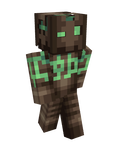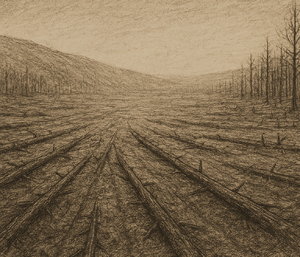Alathra:Forgrums
| Forgrum | |
|---|---|
| Major race | |
 Example appearance | |
| Characteristics | |
| Average lifespan (max) | (100 years) |
| Height range | 1.20 – 2.30 m (3′11′′ - 7′6′′) |
| Strengths | Physically durable and spirit-bound; retains vast memory and may excel in various skills based on form. |
| Weaknesses | Memory loss over lifespan; spiritual instability; slow physical degradation; risk of corruption. |
| Back to Major races → | |
Forgrums are a race of sentient constructs animated not by magic, but by the binding of spiritual essence. They are crafted from materials like stone, metal, clay, wood, or a mixture of elements, each vessel carefully shaped and brought to life through ancient or forgotten rites. Though often mistaken for mindless golems, a Forgrum is fully self-aware and capable of growth, creativity, and complex emotion.
Regardless of physical shape, all Forgrums are unified by their unique source of life: a spirit core, which anchors them to the physical world and grants them consciousness. This spirit core defines their identity more than their outer form, and varies widely in its clarity and temperament.
Though powerful, the Forgrum are vanishingly rare. No Forgrum has lived over a dosentury and their creation is forbidden in nearly all known cultures for one harrowing reason: soul-scarring.
Known forms
Forgrums can come to exist in variable forms that often reflect the role or origin of their creation:
- Stonegrums and Metalgrums are durable and powerful. Their bodies are dense and resistant to most damage, allowing them to operate in environments hostile to other races.
- Claygrums and Rootgrums, made from a mixture of earth, wood, or ritual clay, are slightly more agile and spiritually sensitive. These forms often emerge from ancient cultures that sought to imbue vessels with ancestral memory or elemental balance.
- Puppets, in contrast, are elegant, nimble, and expressive. Their forms may resemble marionettes, dolls, or artistic constructs. Many Puppets were originally created for art, ritual, or companionship, and now walk the world with a depth of emotion and introspection as profound as any of their kin.
Strengths and weaknesses
Due to their constructed nature, all Forgrum possess an innate resilience unmatched by organic beings. They are immune to disease, do not require sleep or food, and can operate tirelessly in extreme environments. Their bodies resist decay and physical wear, especially among the Stonegrums and Metalgrums, whose dense frames can endure immense force.
Their spiritual core grants them an intuitive sensitivity and an ability to feel disturbances in sacred ground, cursed objects, or dying places. Though they cannot wield magic in the traditional sense, their spiritual presence often grants them passive resistance to charm effects or mild enchantments. All Forgrum possess enduring memory, an almost perfect recollection of events once observed, especially if carved or recorded into their body or surroundings. This makes them invaluable as lorekeepers, witnesses, and preservers of lost knowledge.
The puppet-formed Forgrums, while physically less durable, excel in dexterity, social mimicry, and subtle movement. Their light construction allows for expressive gestures and fine motor skills, making them effective artisans, spies, or diplomats when accepted by society.
However, the strengths of the Forgrum come with weighty flaws. They are not living in the biological sense, and as such, they do not heal naturally. Any damage taken must be repaired through careful reconstruction or spiritual binding, and rarely can this be done by the Forgrum themselves. Magical healing does not mend their bodies, and restorative spells often fail entirely unless specifically adapted.
Worse still is the threat of spiritual erosion. A Forgrum’s mind and soul is not protected by natural barriers that other live bodies create, and so they can be easily worn down by grief, corruption, or the loss of purpose. Those who lose touch with their reason for existing may begin to flicker or hollow, gradually forgetting who they are, losing motor function, or becoming erratic. This sensation of feeling lost is feared by all Forgrum, as it often ends in either madness or stillness.
Dark nature of creation

The true dangers of allowing a Forgrum to be created comes at a moral and metaphysical cost. Every Forgrum is bound to life through a process known as spiritual anchoring, but this binding is never clean. It is disruptive to the natural cycle of souls, and results in what is now feared as soul-scarring.
In essence, the act of creating a Forgrum tethers a soul that was never meant to remain, forcibly anchoring it to an artificial vessel. This does not involve a soul willing to stay, it involves one that has already begun to fade into the fabric of the outer realm. The moment it is drawn back, a scar is left in the cycle that reverberates into the world. As a result of this, Forgrums often suffer from existential fragmentation. They get haunted by echoes of lives they never lived or memories they cannot fully access. Many experience phantom sensations, ancestral rage, or spiritual dissonance. This sometimes manifests as madness or erratic behavior, even in previously stable individuals.
The most horrifying aspect is perhaps that the soul bound to a Forgrum never escapes. As the fading of the spirit core causes the body to die, the spirit does not pass on. It remains trapped, dormant inside its remains. This grim fate, once discovered, led many cultures to ban the creation of Forgrums entirely.